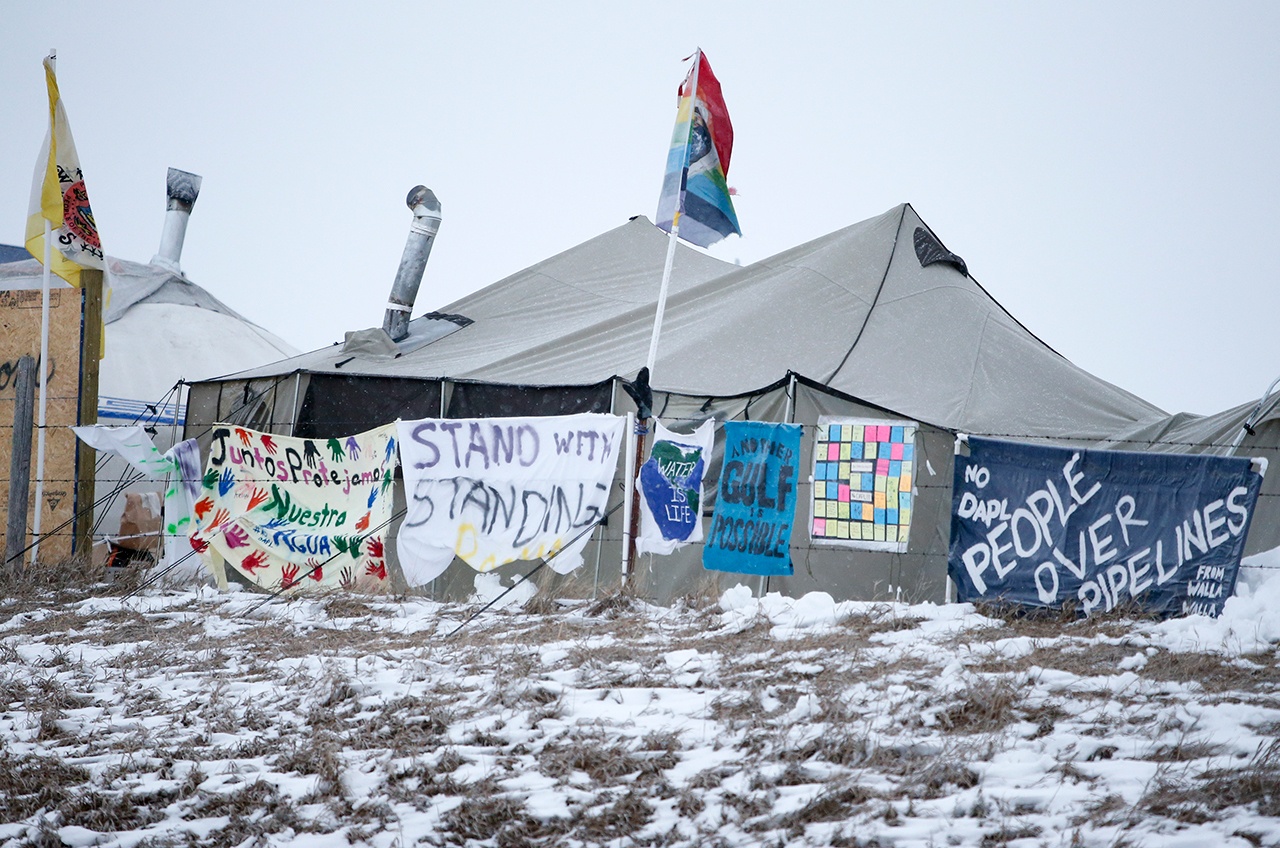By William Yardley
Los Angeles Times
The U.S. Army Corps of Engineers on Wednesday granted the final easement needed for completion of the Dakota Access pipeline, clearing the way for construction to resume and stirring uncertainty about the historic protest effort that has tried to stop it.
“With this action, Dakota Access now has received all federal authorizations necessary to proceed expeditiously to complete construction of the pipeline,” Energy Transfer Partners, the company building the pipeline, said late Wednesday.
The company has said the pipeline can be completed and operational within three months once construction resumes.
The move was not unexpected. On the first Monday he was in office, President Donald Trump instructed the Army to consider rescinding a decision made in the final weeks of President Barack Obama’s term to conduct a more extensive environmental review and consider alternative routes for the pipeline. On Tuesday, the Army Corp announced that it no longer saw the need for an expanded environmental review and expected to issue the easement on Wednesday.
The same day, Trump told a group that he had not received any complaints about his decision.
“I don’t even think it’s controversial,” he said, a remark that quickly drew criticism from pipeline opponents.
The Standing Rock Sioux Tribe, which has led protests against the pipeline, said it will continue to fight its completion in court and, if necessary, fight the operation of the pipeline if it is completed. But the tribe has also encouraged people who have been protesting the pipeline near its reservation for months to leave and focus instead on political and legal efforts.
The $3.8 billion, 1,170-mile pipeline, which would travel from western North Dakota to Illinois, is nearly complete. The main section that remains to be built is the most controversial: a segment that would travel beneath a dammed section of the Missouri River just north of the Standing Rock Sioux reservation. The tribe says the pipeline threatens its water supply and sacred sites on what had been its land before the government forced it onto the reservation.
Energy Transfer Partners says the pipeline, which could transport more than 500,000 barrels of oil daily, is a safer means of transport than rail or truck.
The tribe’s protest began in the spring of 2016 with a handful of people but expanded to include thousands, drawing a wave of Native Americans from across the country as well as environmental groups. It became an international symbol of the battle against fossil fuels and for tribal rights. It also became violent at times, with protesters clashing with law enforcement, leading to more than 700 arrests and claims of police brutality.
Scores of protesters continue to camp in subzero temperatures near the planned river crossing in North Dakota, but their numbers have dwindled as the Standing Rock Sioux has urged them to leave amid brutal winter conditions and concerns about spring floods in a year when the snowpack has been heavy.
“As Native peoples, we have been knocked down again, but we will get back up, we will rise above the greed and corruption that has plagued our peoples since first contact,” Dave Archambault II, the chairman of the Standing Rock Sioux tribe, said Tuesday after the Army Corps announced it would grant the easement Wednesday.
He added, “We call on the Native Nations of the United States to stand together, unite and fight back. Under this administration, all of our rights, everything that makes us who we are is at risk. Please respect our people and do not come to Standing Rock and instead exercise your First Amendment rights and take this fight to your respective state capitols, to your members of Congress, and to Washington, D.C.”


